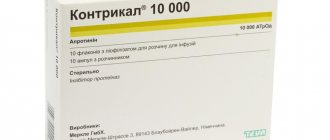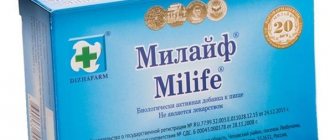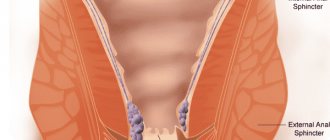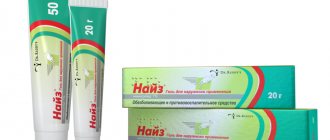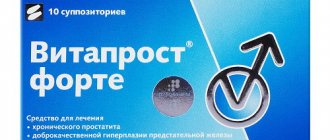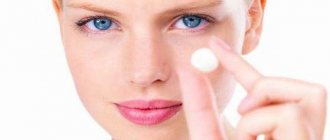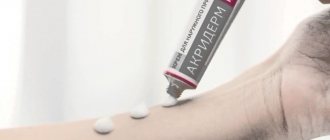Author of the article
Evgeniy Nikolaevich Konoplev
Reading time: 4 minutes
AA
Methyluracil ointment is classified as a drug that has a regenerative effect. With the help of the medicine, the emergence of the physiological structure of the disturbed epidermal cells is activated. Now doctors have improved this product. It has a wider range of effects than before. The drug is based on the active substance Methyluracil.
Compound
Methyluracil ointment refers to unguentum based on methyluracil, an element included in the structure of the nucleic acid. The dominant active substance is a stimulator of skin regeneration from the group of non-steroidal anabolic steroids. The group of non-steroidal general cellular stimulators of regeneration also includes: derinat and vitamin substances.
The composition of a gram of methyluracil ointment includes 100 mg of the active ingredient dioxomethyltetrahydropyrimidine. Auxiliary elements in the composition: purified water, lanolin and petroleum jelly (or paraffin), alcohol, macrogol, do not have medicinal properties, but serve to form the form of the drug. Before use, you need to study the composition, since it is the excipients that can cause an allergic reaction in the body.
Methyluracil analogs
Like many other drugs, Methyluracil ointment has analogues that are similar in their structural structure and have a similar effect:
- Levomekol ointment.
- Bepanten.
- Aekol based on retinol.
- Acerbin.
- Sea buckthorn ointment.
- Arghedin.
Read more Instructions for use of Streptocide ointment
These analogs can serve as an alternative if you are intolerant to the components of Methyluracil ointment.
Release form
Today there are the following forms of release of the drug:
♦ methyluracil ointment 10% - release form: tubes of 15 g, 25 g and 30 g. The indicated percentage of 10 is the only concentration available. There is no 1% or 5% concentration. Depending on the manufacturer, the color of the ointment may vary from white to light yellow due to preservatives and components that form the drug. The difference in color does not affect the medicinal properties. The drug in ointment form is available without a prescription. The ointment has a shelf life of 3.5 years in a dry place at a temperature not exceeding 20 degrees; storage in the refrigerator is considered desirable;
♦ in tablet form 50 pcs. 0.5 g of the medicine is prescribed for benzene poisoning, aleukia, agranulocytic tonsillitis, leukopenia as a result of chemotherapy for tumors and other diseases in which the level of leukocytes in the blood decreases.
It is also recommended to use for gastritis, gastrointestinal ulcers, pancreatitis, liver diseases and to improve the metabolism of nucleic acids in the mucous membranes. The long-term effect of the tablets is stimulation of appetite, increased weight and ability to work;
♦ in the form of a “suppository” or so-called “rectal suppositories”, prescribed for the treatment of injuries to the rectum. The package insert for the drug states that they are used only in proctology, although doctors also treat gynecological ailments with suppositories. Proctologists prescribe a maximum of 2 suppositories for adults three times a day, for young children 3-8 years old - ½ suppository per day, and from 8 to 14 years old - 1 suppository per day.
Not a note
- Methyluracil ointment has an immunostimulating effect.
- It is not hormonal, but it is recommended for use in children from 3 years of age.
- The average cost of a 25 gram tube is 60 rubles.
- The drug does not penetrate into the systemic circulation, but is used with caution during pregnancy.
The material was prepared specifically for the website mazikrem.ru, edited by doctor M.A. Kantser. Specialty: infectious diseases, general hygiene, virology.
Medicinal properties
Methyluracil ointment is recommended for use on damaged areas to stop the inflammatory process, pain and swelling. The result of improving the cellular nutrition of the affected tissue is the formation and development of cells.
The spectrum of action from the point of view as a healing agent is wide: from burns, wounds, promoting the rapid regeneration of postoperative suture cells.
Wound ointment with methyluracil triggers the process of active protein synthesis, reducing the excretion of substances such as:
- phosphorus;
- potassium;
- nitrogen;
- sulfur.
Reviews
Maria, 32 years old
I was prescribed methyluracil ointment after a cesarean section to quickly heal the suture and to avoid leaving a large scar.
Ivan, 34 years old, Syzran A burn was treated with ointment. I scalded my hand and there was a wound next to the hand. There is no scar left.
Larisa, Moscow Methyluracil ointment helps a lot against wrinkles. It’s not that they are completely gone, but the face really looks fresher and smoother.
Yulia, Chita We use methyluracil ointment for wounds, acne, ulcers, and burns. This is a product that should be on hand in your home medicine cabinet.
Side effect
The side effect of methyluracil ointment can only have local symptoms in the form of minor itching, redness and temporary burning. Symptoms of individual intolerance most often appear at the initial stage of topical application. During treatment, an overdose and, as a result, allergies or migraines are possible only if large areas of the skin are treated.
During pregnancy, the ointment is applied in the usual way, as it does not harm the fetus; in the case of tablets, medical supervision is necessary.
When asking the question: “Is this ointment hormonal or not?”, the answer is unequivocal - no, so there is no reason to doubt its use in children.
In household use, it helps to easily soothe the site of a midge bite, heal cracks in the foot and gaps between the toes, clear acne and even boils, and soothe the skin after shaving.
Methyluracil ointment - contraindications
If you have any allergic reactions to the ingredients of the drug, its use is prohibited. Methyluracil ointment is not used for young children. It can provoke a negative response from the immune system in the form of hypersensitivity symptoms - skin rashes, swelling and redness. Methyluracil ointment is especially not recommended for infants; it can only be used from the age of 3 years.
Other contraindications:
- excessive granulation in the wound;
- acute, chronic leukemia, especially myeloid;
- malignant bone marrow tumors;
- lymphogranulomatosis;
- skin rashes at the site of application.
Main indications for use and contraindications
Methyluracil in the form of “ointment”, based on the instructions for use, is prescribed for the following purposes:
1. For rapid healing of the skin surface in case of fractures, thermal and other burns, photodermatitis, skin ulcers, bedsores, complex cuts, sutures. The daily dosage is up to 10 g of the product, and its consumption is proportional to the number of dressing changes and the scale of treatment. Manufacturers suggest applying methyluracil against injuries on any surface for tissue regeneration in the shortest possible time. Before use for burns and wounds, the area is treated with an antiseptic (chlorhexidine, weak solution of manganese, furatsilin, peroxide 3%) to remove purulent discharge and dead cells. Then the product is applied to the cut, as well as to the adjacent healthy skin, and covered with a sterile bandage. When cleaning the wound and frequently contaminating the bandage, the bandage is changed after a maximum of 4 hours, and if the surface is clean, the procedure is carried out twice a day.
Instructions for use
The ointment is used externally. Apply a small layer to the affected area of skin 1-2 times a day. Before use, the wound is treated with an antiseptic, then the remains of dead tissue are removed. In case of severe damage, the ointment is applied to sterile swabs, which are then applied to the lesion for 20 minutes. If pus is released in the wound, the procedure must be performed 5-6 times a day.
If the extent of the wound is large, then tampons with Methyluracil ointment fill the entire depth of the damage. If there are wound fistulas, tampons with ointment are inserted into their passages.
After a week of use, significant improvement is observed. The course of treatment depends on the extent of the lesion and the depth of the damage.
To treat postpartum cracks, the surface is first washed with soapy water; if there are stitches, the wounds are treated with an antiseptic solution, then the skin is dried for about 15 minutes. Only after the above procedures, sterile swabs soaked in medicine are applied to the site of the seam or crack, pressing lightly. Underwear is put on over the bandage. Repeat the procedure 4 to 6 times a day. The number of swabs and dressings to be changed depends on the condition of the wound. The course of treatment is 7–10 days.
To treat the inflammatory process of the vagina, the perineum is douched with a weak solution of potassium permanganate, then dried well. After this, a tampon with ointment is inserted vaginally, or the vaginal walls are treated in a circle with a finger. The procedure is repeated 2–3 times a day. The condition of the mucous membrane improves after a week of use of the medication.
Read more Instructions for using Uroderm ointment
To heal cracked nipples, after each feeding, rub the product with light movements onto the damaged area. Before feeding, the remaining ointment is removed with a clean napkin and then washed with water.
When treating burns, the drug is applied in a thin layer to the wound. For deep burns, the medicine is used in the form of gauze bandages up to four times a day, on the affected skin area that has been previously cleansed of secretions.
To treat acute bullous dermatitis, the affected area is treated with an antiseptic solution, the remains of necrotic tissue are removed and the medicine is applied in a thin layer. The course of treatment ranges from two weeks to a month.
Methyluracil is also able to fight fine wrinkles on the face. To do this, apply the ointment with light, gentle movements to cleansed skin. Excess product residues are removed with a clean napkin. The result is noticeable after the fifth procedure.
Treatment of runny nose in children
Reminder. Ointment with the active substance methylarucil is applicable to children over 3 years of age.
For the purpose of treatment and prevention in children, a local antiseptic and antibacterial drug is prescribed. A severe runny nose with green, thick mucus is a bacterial infection and methylarucil is an effective remedy in this case. You need to treat the nasal mucosa using a cotton swab.
Methylarucil has an immunomodulatory effect, therefore it demonstrates effectiveness in the fight against viral infections.
In adults, dry rhinitis (drying of the nasal mucosa) responds well to treatment. You should smear your nose twice a day, and in 5-7 days the mucous membrane is completely restored.
Selection and purchase of ointment
Most companies offer a 25 gram tube, so choose the manufacturer you like and focus on the price. The drug is sold in pharmacies without a prescription.
Analogs
In case of an allergy to the components of the ointment, Methyluracil has analogues.
Drugs such as Pantestin and Vundekhil will improve tissue regeneration and have an antimicrobial effect.
Tyrosur gel and Fastin are antibiotics; they will help with wounds and burns.
Regetsin will help in the fight against acne and relieve inflammation.
Use of ointment in gynecology
The first area of gynecological use of methyluracil is the postpartum period. During natural childbirth, the perineum often ruptures, or an episiotomy procedure is performed (an incision in the perineum to allow passage of the fetus). The most difficult stage is wound healing and the best assistant will be an antiseptic ointment, for example, with methyluracil. Before using the ointment, the perineum is washed with water and a mild detergent, then a gauze pad soaked in a hypertonic solution (a tablespoon of salt per glass of 200 g of water) is applied for 30 minutes. After this, a napkin with ointment is applied to the wound for 30 minutes. The procedure of alternating solution and unguent is repeated 10-14 days after each act of urination. This treatment ensures rapid healing of wounds and resorption of scars.
Treatment of hemorrhoids
For hemorrhoids, ointment with dioxomethyltetrahydropyrimidine (methyluracil) shows good results, reducing the size of the nodes and eliminating pain and discomfort. A complex of two forms of the product is recommended by proctologists: ointment and suppositories at the same time.
Correct administration: perform a bowel movement, wash the anus and dry it with gauze, wet your finger with olive oil, insert a candle deep into the passage and lie there for half an hour. After this, the hemorrhoids are smeared outside the passage. The same applies to anal fissures.
Other forms of the drug: suppositories and tablets
In addition to the ointment composition, methyluracil is produced in the form of tablets and rectal suppositories. Rectal suppositories are used in the same way as vaginal suppositories. Which is better, methyluracil suppositories or ointment, tablets? The choice of drug form is determined by the disease. Here are the general rules when prescribing tablets, suppositories and ointments.
| Tablets are indicated for general systemic treatment . They are prescribed when there is an insufficient number of leukocytes in the blood (which happens after chemotherapy and radiation). For anemia, poisoning and decreased platelets. For peptic ulcers and as a general tonic during (or after) treatment of infectious diseases, during the recovery period after any injuries (as a general tonic). |
| Suppositories - used for local treatment of hollow organs . For example, methyluracil suppositories are administered into the intestines for hemorrhoids and colpitis, ulcerative colitis and proctitis. And also inside the vagina for the healing of erosive formations, in the treatment of vulvitis. And also - after surgical gynecological interventions (for example, after removal of polyps). |
| Ointment is the most inexpensive option. It is in demand in the treatment of various skin injuries - burns, cuts, lacerations, suppuration, trophic ulcers. And also in gynecology - for postpartum sutures, ruptures. And also - when caring for bedridden patients - for the treatment of bedsores. |
